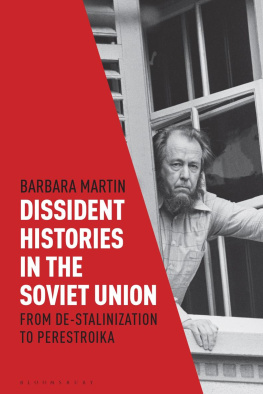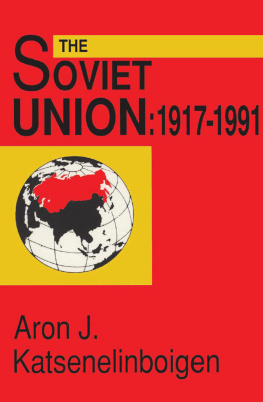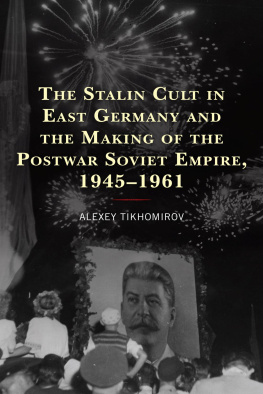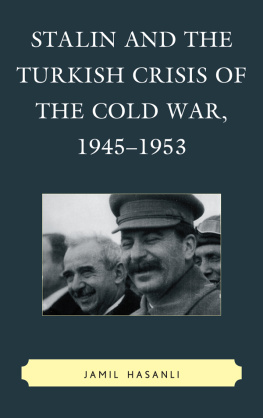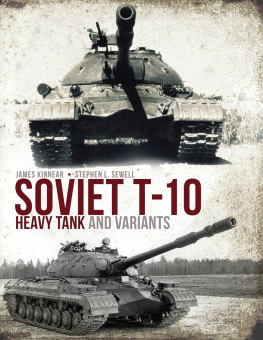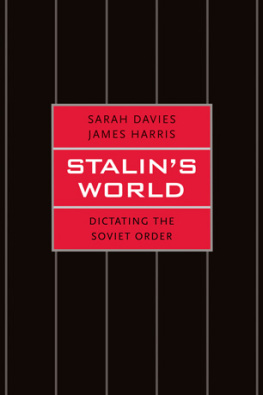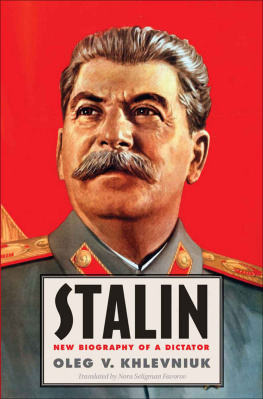THE ART OF THE BRIBE
CORRUPTION UNDER STALIN,
1943-1953
JAMES HEINZEN
Hoover Institution
Stanford University
Stanford, California

Published with assistance from the Mary Cady Tew Memorial Fund.
Copyright 2016 by Yale University and the Board of Trustees of the Leland Stanford Jr. University. All rights reserved.
This book may not be reproduced, in whole or in part, including illustrations, in any form (beyond that copying permitted by Sections 107 and 108 of the U.S. Copyright Law and except by reviewers for the public press), without written permission from the publishers.
Yale University Press books may be purchased in quantity for educational, business, or promotional use. For information, please e-mail (U.K. office).
Set in Sabon type by Integrated Publishing Solutions, Grand Rapids, Michigan.
Printed in the United States of America.
Library of Congress Control Number: 2015959466
ISBN 978-0-300-17525-7 (hardcover : alk. paper)
A catalogue record for this book is available from the British Library.
This paper meets the requirements of ANSI/NISO Z39.48-1992 (Permanence of Paper).
10 9 8 765 4 3 21
Contents
Acknowledgments
I am grateful to the many organizations and agencies that helped to fund research for this project: the National Endowment for the Humanities (NEH), the Library and Archives of the Hoover Institution on War, Revolution, and Peace of Stanford University, including its Archives Summer Workshops, the National Council for Eurasian and Eastern European Research (NCEEER), the Kennan Institute of the Woodrow Wilson Center, and the Open Society Archives (OSA) at Central European University (Budapest). At Rowan University my deans, Jay Harper, Parviz Ansari, and Cindy Vitto provided me with research and travel support.
I would like to thank the following people, who generously read parts of my manuscript, conference papers, or articles in draft form, and offered valuable advice and suggestions: Yoram Gorlizki, Stephen Kotkin, David Brandenberger, Paul Gregory, Eugene Huskey, Benjamin Nathans, Peter Holquist, Jeffrey Jones, Wendy Goldman, Don K. Rowney, Alfred Rieber, Andrei Markevich, Mark Harrison, Vanessa Voisin, Leonid Borodkin, Golfo Alexopolous, Kathryn Hendley, Juliane Frst, Robert Weinberg, Becky Griffin-Heinzen, and Bill Heinzen.
Paul Gregory invited me to wonderful workshops on Stalinism that he organized at the Hoover Archive at Stanford. The seminars were stimulating and collegial, and provided me with access to the Hoovers amazing collections and staff, including its directors Eric Wakin and Elena Danielson, archivist Lora Soroka, and the director of the reading room, Carol Leadenham. I am grateful for the assistance of several professional Russian archivists and staff, including Galina Gorskaia, Nina I. Abdullaeva, Elena A. Tiurina, Tatiana V. Tsarevskaia, and the staff and archivists of the Russian State Archive of Socio-Political History (RGASPI) and the State Archive of the Russian Federation (GARF). My excellent research assistants at Rowan University were Melissa Ambricco Schwartz, Gregory Hopely, Edward Purcell, and Caressa Lynch.
Special thanks to Peter Solomon, who over the course of more than ten years has offered unstinting encouragement as I wrote this book. He read the entire manuscript and numerous conference papers, patiently offering advice. I am grateful, too, to David Shearer. Our marathon lunches have helped to shape the way I think about Soviet history. Dave read large chunks of the manuscript, often in very rough form, and offered valuable suggestions about every dimension of the book. To a person, my remarkable colleagues in the history department at Rowan University are wonderful people, as well as excellent scholars and teachers. Special thanks to department chairs, Bill Carrigan, Edward Wang, and Joy Wiltenburg, and to Denise Williams, the department secretary. As I was nearing completion of this project, William C. Jordan, Philip Nord, and David Abraham unexpectedly took the time to share their expertise on everyday corruption. I also want to thank Beverly Michaels, the copy editor for Yale University Press, whose careful reading of the manuscript has made the book much better.
Becky Griffin-Heinzen gave advice and read every chapter multiple times, immeasurably improving the book in every respect. To her I owe the greatest debt, in this and in all things great and small. My children, Conor Heinzen and Jay Heinzen, have provided me with enormous inspiration over the years as they have demonstrated curiosity, courage, and great humor. To them this book is dedicated.
Some parts of this book have been published previously. An expanded version of (2007). Sections of the fifth chapter first appeared as A Campaign Spasm: Graft and the Limits of the Campaign against Bribery after the Great Patriotic War, which appeared in Late Stalinist Russia: Society between Reconstruction and Development, edited by Juliane Frst (2006).

Each of the people named here deserves credit for helping to write this book. All the blame for its shortcomings, needless to say, lies with me alone.
Introduction
SINCE THE COLLAPSE of the Soviet Union in 1991, traditions and practices of bribery inherited from the Soviet era have continued to permeate nearly every sphere of life in contemporary Russia. Despite a great deal of interest in the corruption and black markets that marked the final decades of the Soviet Union, little attention has been devoted to the phenomenon during the important years between World War II and Stalins death in 1953. Following the chaos of the war itself, these postwar years, known as late Stalinism, were pivotal in the evolution of corruption in Soviet times. By the midpoint of the war in 1943, illegal underground economic activity, the theft of state property, and bribery were significant sources of concern for Communist Party leaders, as they seemed to have become more deeply entrenched in Soviet life.
The Soviet Union under Stalin was an extremely repressive regime that nevertheless experienced great difficulties maintaining discipline among its own officials. This paradoxthat bribery practices were widespread during the very apogee of the Stalinist dictatorshiplies at the heart of this study. Bureaucrats bartered with common citizens (and with each other) in exchange for their services. Such negotiations were part of the dodging and cajoling that shaped individuals relationship with Soviet state actors. By 1943, the Stalinist party-state struggled to understand the roots of an upsurge in this informal behavior among its officials and took steps to try to bring it under control. At the same time, however, the regime unintentionally created conditions in which illegal deals between Soviet officials and citizens could flourish.
Few scholars have written about corruption and economic crime in this period, even when they have studied other types of crime. The postwar Stalin period, in fact, prepared the ground for the blossoming of the corruption of mature socialism in the 1960s1980s.
Those who seek to understand the roots of the corruption that infected the Soviet Union during the Brezhnev years should look earlier, to the postwar Stalin period. Neither bribery nor other types of corruption appeared for the first time during late Stalinism, of course. The prewar years witnessed many of the same opportunities for embezzlement of state property, illicit networking, and black market activity that were prevalent in the late Stalinist years. During the postwar period, these activities and the dictatorships reaction to them, however, were characterized by features that both linked them to, and distinguished them from, what came before. World War II and the postwar crises shaped the nature of corrupt activities in the late Stalin years (and beyond).


